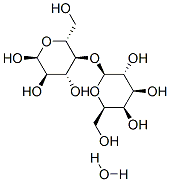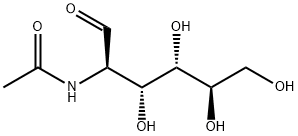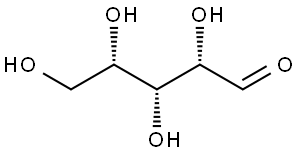Alpha-D-Lactose monohydrate
Synonym(s):β-D -Gal-(1→4)-α-D -Glc;4-O-β-D -Galactopyranosyl-α-D -glucose;Milk sugar
- CAS NO.:5989-81-1
- Empirical Formula: C12H24O12
- Molecular Weight: 360.31
- MDL number: MFCD00150747
- EINECS: 611-913-4
- SAFETY DATA SHEET (SDS)
- Update Date: 2025-01-27 09:38:02

What is Alpha-D-Lactose monohydrate?
Chemical properties
White powder
Chemical properties
Lactose occurs as white to off-white crystalline particles or powder. It is odorless and slightly sweet-tasting. Spray-dried directcompression grades of lactose are generally composed of 80–90% specially prepared pure a-lactose monohydrate along with 10–20% of amorphous lactose.
The Uses of Alpha-D-Lactose monohydrate
alpha-D-Lactose monohydrate is used as a carrier and stabiliser of aromas, pharmaceutical products, Food industry.
Production Methods
A suspension of a-lactose monohydrate crystals in a lactose solution is atomized and dried in a spray drier. Approximately 10–20% of the total amount of lactose is in solution and the remaining 80–90% is present in the crystalline form. The spray-drying process predominantly produces spherical particles. The compactibility of the material and its flow characteristics are a function of the primary particle size of the lactose monohydrate and the amount of amorphous lactose.
Definition
A sugar that occurs in many plants. It is extracted commercially from sugar cane and sugar beet. Sucrose is a disaccharide formed from a glucose unit and a fructose unit. It is hydrolyzed to a mixture of fructose and glucose by the enzyme invertase. Since this mixture has a different optical rotation (levorotatory) than the original sucrose, the mixture is called invert sugar.
Pharmaceutical Applications
Spray-dried lactose is widely used as a binder, filler-binder, and flow aid in direct compression tableting.
Biochem/physiol Actions
alpha-Lactose is the primary sugar present in milk and the main energy source to a newborn mammalian through its mother′s milk. It is digested by the intestinal lactase (EC 3.2.1.108), an enzyme expressed in newborns. The enzyme′s activity declines following weaning which can lead to lactose intolerance in adult mammals.
Safety
Lactose is widely used in pharmaceutical formulations as a diluent
in oral capsule and tablet formulations. It may also be used in
intravenous injections.
Adverse reactions to lactose are largely due to lactose intolerance,
which occurs in individuals with a deficiency of the enzyme
lactase.
storage
Spray-dried lactose should be stored in a well-closed container in a cool, dry place.
Incompatibilities
Lactose is a reducing sugar. The amorphous lactose, which is the most reactive form of lactose present in spray-dried lactose, will interact more readily than conventional crystalline grades. Typical reactions include the Maillard reaction with either primary or secondary amines.
Properties of Alpha-D-Lactose monohydrate
| Melting point: | 219 °C |
| Boiling point: | 412.35°C (rough estimate) |
| alpha | [α]D20+52.2~+52.8° |
| Density | 1,53 g/cm3 |
| RTECS | OD9625000 |
| refractive index | 1.6480 (estimate) |
| storage temp. | Inert atmosphere,Room Temperature |
| solubility | H2O: soluble1M, clear, colorless |
| form | neat |
| form | Solid |
| color | White to Off-White |
| PH | pH (50g/l, 25℃) : 4.0~6.0 |
| Water Solubility | Soluble in water. |
| Stability: | Hygroscopic |
| CAS DataBase Reference | 5989-81-1(CAS DataBase Reference) |
| EPA Substance Registry System | .alpha.-D-Glucopyranose, 4-O-.beta.-D-galactopyranosyl-, hydrate (1:1) (5989-81-1) |
Safety information for Alpha-D-Lactose monohydrate
Computed Descriptors for Alpha-D-Lactose monohydrate
| InChIKey | WSVLPVUVIUVCRA-KPKNDVKVSA-N |
New Products
3-Iodophenylacetic acid 3-Pyridineacetonitrile, α-hydroxy- 2-Propanamine, 1-chloro-, hydrochloride (9CI) 3-(hexyloxy)-4-(pyridin-3-yl)-1,2,5-thiadiazole 2-Hexyn-1-ol Dibenzo-18-crown-6 Nickel(II) perchlorate hexahydrate, 98% 4-Bromophenylacetonitrile, 95% 3-Bromo-4-fluoroaniline, 97% Sodium tetraborate decahydrate, 98% Palladium(II) acetate, trimer, Pd 99% 4-Bromo-2-chlorotoluene, 97% N N Dimethylformamide Dimethyl Acetal (Dmf Dma) 2,3-Dichloro Benzoyl Cyanide [Side Chain] Bis(2-Chloroethyl) Amine Hydrochloride L-Glutamic Acid Diethyl Ester Hydrochloride 5-(Difluoromethoxy)-2-Mercaptobenzimidazole 1-Ethyl-3-(3-Dimethylaminopropyl)-Carbodiimide Hydrochloride [EDC Hcl] 1,4-Napthoquinone Bromoiodomethane Sodium Bicarbonate Methylene Dichloride (MDC) Ethyl Acetate Indole-3-Carbinol (I3C)Related products of tetrahydrofuran








You may like
-
 α-Lactose monohydrate CAS 5989-81-1View Details
α-Lactose monohydrate CAS 5989-81-1View Details
5989-81-1 -
 α-Lactose monohydrate CAS 5989-81-1View Details
α-Lactose monohydrate CAS 5989-81-1View Details
5989-81-1 -
 α-Lactose monohydrate CAS 5989-81-1View Details
α-Lactose monohydrate CAS 5989-81-1View Details
5989-81-1 -
 Lactose Monohydrate CAS 5989-81-1View Details
Lactose Monohydrate CAS 5989-81-1View Details
5989-81-1 -
 17604-74-9 3-Pyridineacetonitrile, α-hydroxy- 98+View Details
17604-74-9 3-Pyridineacetonitrile, α-hydroxy- 98+View Details
17604-74-9 -
 Cyclohexane, (2-propynyloxy)- 67967-07-1 98+View Details
Cyclohexane, (2-propynyloxy)- 67967-07-1 98+View Details
67967-07-1 -
 3-Iodophenylacetic acid 1878-69-9 98+View Details
3-Iodophenylacetic acid 1878-69-9 98+View Details
1878-69-9 -
 132945-75-6 (S)-1-Boc-3-methanesulfonyloxy-pyrrolidine 98+View Details
132945-75-6 (S)-1-Boc-3-methanesulfonyloxy-pyrrolidine 98+View Details
132945-75-6
